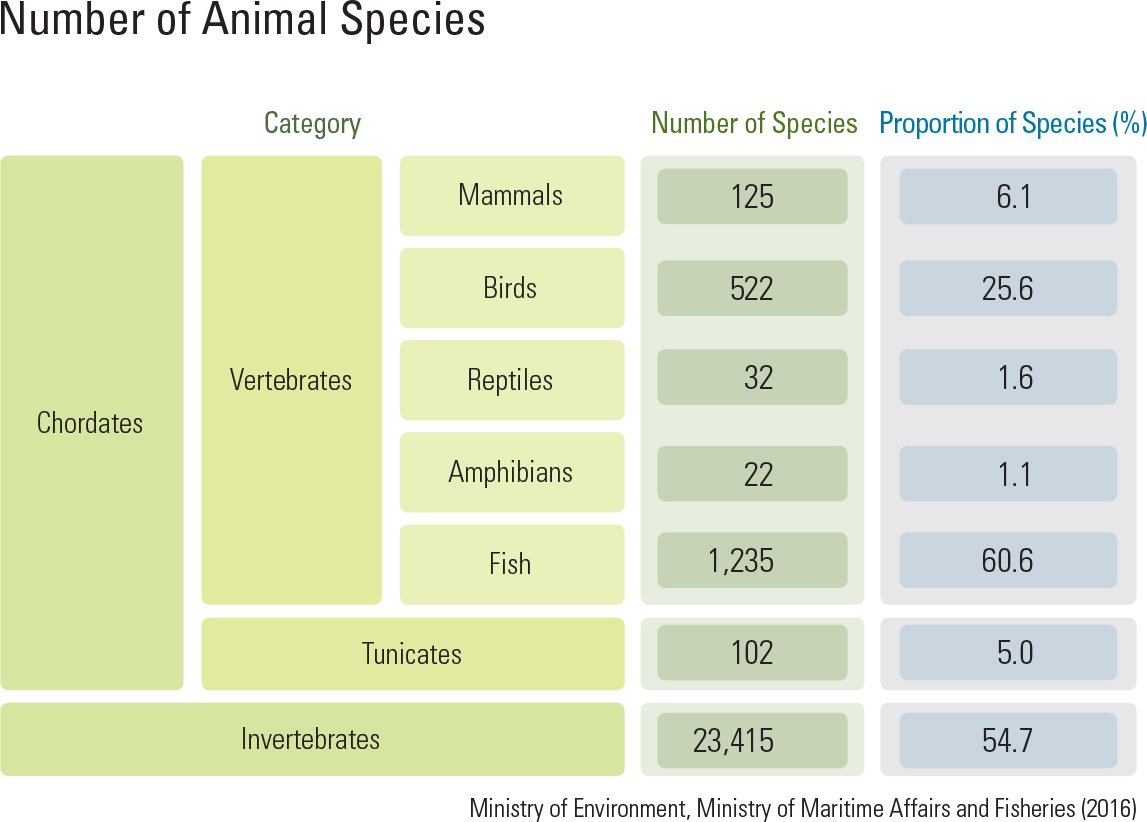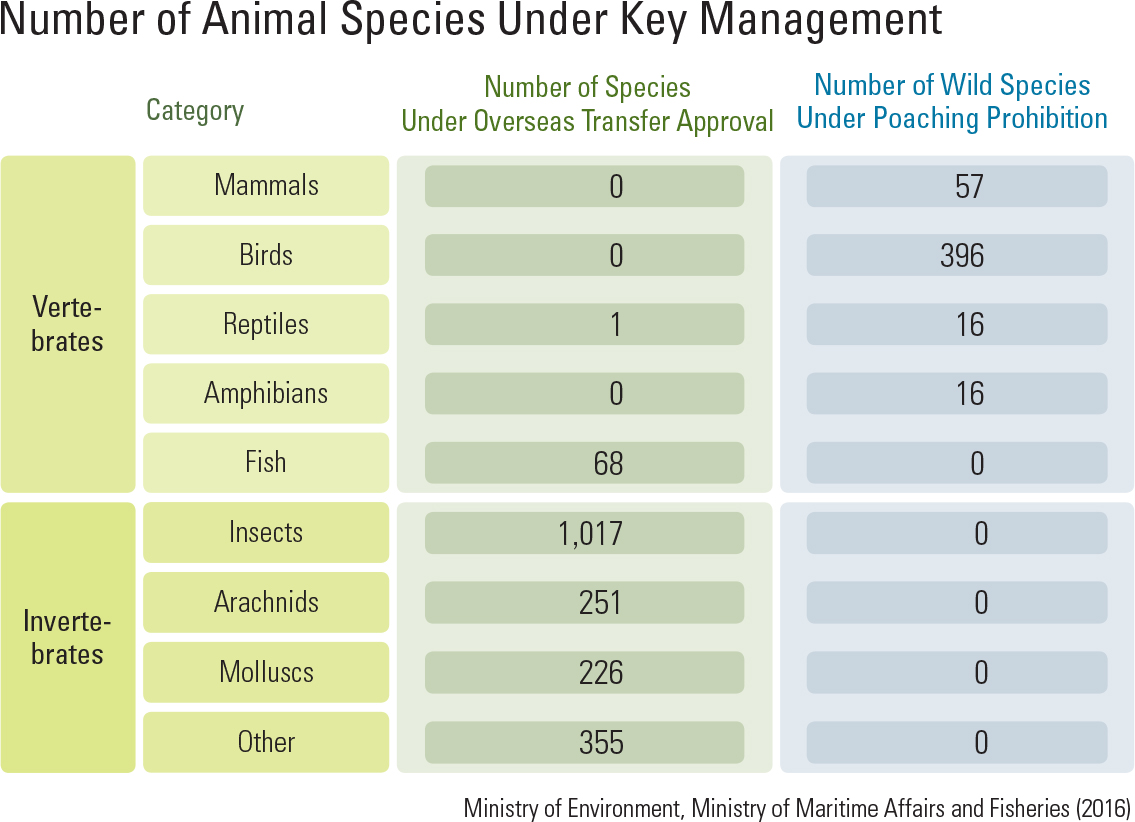English II
The Baekdudaegan forms the core of mountains in the Korean Peninsula, their continuous ranges reach out to the seas on three sides of the penin- sula forming the main streams such as Hangang, Nakdonggang, Geumgang, and Seomjinjang. Res- idential areas in cities and villages, and produc- tive agricultural land and estuaries possess unique fauna. The Korean Demilitarized Zone (DMZ), subalpine zone and islands play an important role as middle stopover sites for migratory animals. In Korea, approximately 100,000 species of living organisms are estimated to inhabit the land, and 42,756 species among them have been identi- fied and recorded. Among the recorded species, 25,453 species, which constitute 59.5% of the total, belong to the Kingdom Animalia including 1,936 species of vertebrates, 102 species of tuni- cates, and 23,415 species of invertebrates. Although Korea seems to be a peninsula that is part of Northeast Asia, the peninsula is eco- logically isolated from the continent by the high mountain terrain of Baekdusan and two large rivers. The Amnokgang in the northwest and the Dumangang in the northeast act as barriers that limit movement of wild animals to Korea from China and Russia. Consequently, freshwater sh and insects in the Korean Peninsula have more endemic species than other taxa. Endemic species are those that are native to a particular geographic area and are not naturally found anywhere else in the world. Out of the 100,000 species that may live in Korea, approximately 10% is presumed to be endemic. In terms of higher animals, 4 species of birds, 4 species of mammals, 5 species of am- phibians, one reptile species, and 59 species of shes are known to be endemic to Korea. In the case of marine organisms, there are ap- proximately 32 species per 1,000 km2 of territo- rial water and Exclusive Economic Zone (EEZ), which is the highest diversity in the world, and that of coastal wetlands is found to be 717 spe- cies. Endemic animal species inhabiting South Korea account for 6.95% of indigenous animal species and include 76 species of vertebrates, one tunicate species, and 1,691 species of inverte- brates. There are 35,569 Globally Endangered Species (Class I, II), including 5,659 animal species, of which 31 are prohibited from being used as food, 479 are protected from capture, 12 are permitted to be captured for arti cial insemination, and 568 are approved for export and import. In the case of marine life, 77 species, of which 70 species are animals inhabiting marine or coastal envi- ronments, which are classi ed as marine animals under protection, domestic endemic species, and/ or species that are highly valued academically and economically are subject to protection. Of 45 endangered animal species, 4 species are migra- tory marine animals and 41 species are marine mammals. Decrease in the number of predators of higher trophic levels led to an increase of small and me- dium sized mammals, which have been damaging crops and cultivated areas. Some domesticated animals released into the wild have been affecting the faunal ecosystem. Of 18 species determined to cause bioturbation, 6 species are animals. Of 24 species of potential adverse ecological effects 7 species are animals. There are 17 wild animal species that cause harm to the environment, one naturalized animal, and 16 animal species under lawful hunting. Of 15 marine species that cause harm to the environ- ment, 8 species are animals. Conservation projects for endangered wild ani- mal species have been designed to target the Asi- atic black bear (Ursus thibetanus ussuricus), Ko- rean goral (Naemorhedus caudatus), Korean fox (Vulpes vulpes peculiosa), Oriental stork (Ciconia boyciana), crested ibis (Nipponia nippon), sea horse (Hippocampus coronatus), green turtle (Chelonia mydas), and several other species. Twenty-four Ex-Situ Conservation Institutes have been established for conservation projects for endangered species and their habitat restoration. In addition, there are 8 medical care and rescue centers for protected marine animal species. The factors that threaten the wildlife species are poaching and trafficking (600 – 800 cases per annum), roadway mortality (5,700 cases per annum), whaling (2,633 cases per annum as of 2012), and predation due to the extinction of predators that control the populations of animals such as wild boar (Sus scrofa) and water deer (Hydropotes inermis).
|



